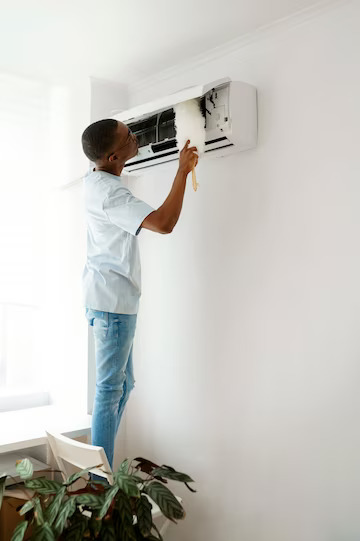
Welcome to our definitive guide on cleaning a terrazzo floor like a pro. Terrazzo, with its rich history dating back to ancient times, has evolved into a beloved flooring choice for modern homes and commercial spaces. Its unique blend of chips from materials like marble, quartz, or granite, set in a polished cement or resin base, gives it a distinctive, speckled appearance that adds character and elegance to any space. However, this beauty comes with specific cleaning needs, distinct from other floor types.
As experts in floor care, we understand the challenges and nuances of maintaining terrazzo's pristine condition. In this blog, we're excited to share with you our tried-and-tested cleaning techniques, essential dos and don'ts, and professional tips. Whether you're tackling daily maintenance or deep cleaning, our advice will help you keep your terrazzo floors looking immaculate. Join us as we delve into the world of terrazzo floor care, ensuring your floors not only shine but also reflect the best of your space.
Daily maintenance is crucial for preserving the lustre and longevity of terrazzo floors. For routine cleaning, sweeping or dry mopping is essential. Use a microfiber mop or soft broom to gently remove dust, dirt, and debris. This regular upkeep prevents the accumulation of grit that can scratch and dull the terrazzo surface.
Incorporating doormats and area rugs in high-traffic zones, like entrances and hallways, is an effective strategy. These barriers capture much of the dirt and moisture that would otherwise make its way onto your terrazzo floors. It's a simple yet effective measure to keep your floors cleaner and reduce the frequency of wet cleaning.
When it comes to spills and stains, prompt action is key. Terrazzo is resilient, but like all flooring, it can be susceptible to staining, especially if it's cement-based. Blot spills immediately with a clean, dry cloth to prevent them from setting in. Avoid scrubbing, as this can push the spill deeper into the porous surface. For tougher stains, a pH-neutral cleaner can be used, ensuring it's suitable for terrazzo. Remember, consistent and immediate attention to spills will maintain the pristine condition of your terrazzo floors.
Deep cleaning your terrazzo floors can restore their natural shine and extend their lifespan. Here is a clear step-by-step guide to help you do it effectively:
Addressing stains and discolouration on terrazzo floors requires understanding the types of stains and appropriate removal methods. Common stain types include organic (like food or plant-based), inorganic (such as ink or dyes), and oil-based (like grease or cosmetics).
For organic stains, a simple DIY solution is a mixture of water and a pH-neutral cleaner. Place the solution on the stain, let it set for a little while, then rub away with a soft cloth. For inorganic stains, you can get away with a slightly stronger approach, like one part strong ammonia to three parts water. But use it sparingly and carefully since ammonia is harsh.
As far as oil-based stains are concerned, poultices can be used. A poultice is one which combines a solvent, such as hydrogen peroxide, and an absorbent powdery material--baking soda, for instance. Wipe it over the stain, lay down plastic wrap and let stand for 24-48 hours before wiping it off.
However, there are limits to home cleaning. Deep-set, stubborn, or extensive stains often require professional attention. Professionals have access to specialized cleaning agents and equipment that can safely and effectively remove tough stains without damaging the terrazzo. If you're unsure or the stain persists despite your efforts, it's wise to call in the experts. This is especially important for historic or highly valuable terrazzo floors, where preservation is critical.
Polishing and sealing are integral to maintaining terrazzo floors' aesthetic and durability. Polishing revives the floor's natural sheen, smoothing out minor imperfections and enhancing its characteristic vibrancy. This process not only rejuvenates the floor's appearance but also contributes to its longevity by providing a protective layer against everyday wear and tear.
Professional floor polishing and sealing are necessary for thorough maintenance, especially in high-traffic areas. Professional-grade sealants add an extra layer of protection, safeguarding the terrazzo against stains, spills, and scratches. These treatments are particularly crucial for cement-based terrazzo, which is more porous and susceptible to damage. Regular professional maintenance, ideally every few years, ensures the terrazzo remains in pristine condition, preserving its beauty and functionality over time.
The care and maintenance of terrazzo floors require specific practices and products. Understanding the composition of your terrazzo and its unique needs is the first step to proper care. Regular sweeping and prompt spill management help maintain its day-to-day appearance, while deeper cleaning with appropriate pH-neutral cleaners preserves its integrity. Addressing stains with suitable DIY solutions is effective, but recognizing when professional help is needed is equally important. Regular polishing and sealing, especially by professionals, are vital to protecting and enhancing the terrazzo's natural beauty. By implementing these tips and tricks, you can maintain your terrazzo floors with confidence, ensuring they remain a stunning feature in your space for years to come.
Subscribe to our newsletter to get inbox notifications